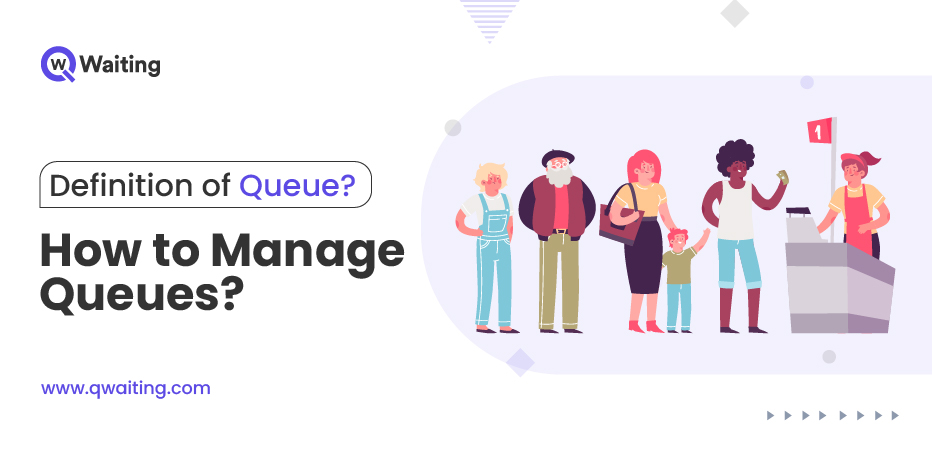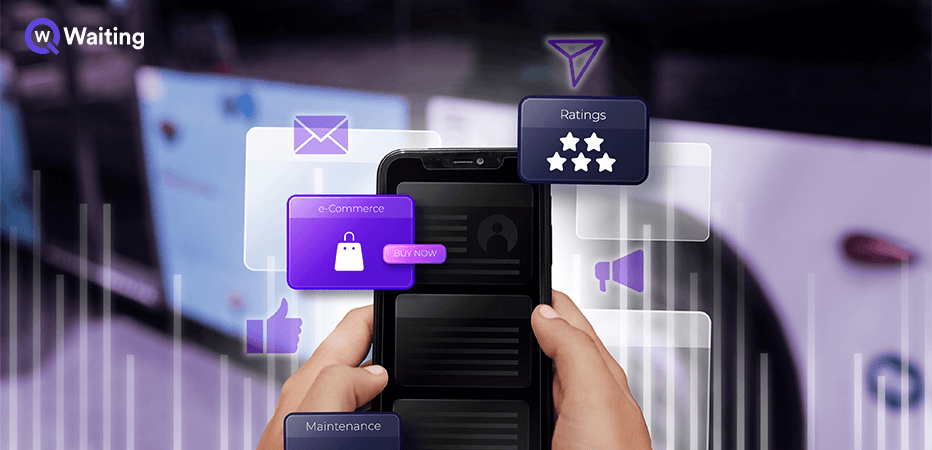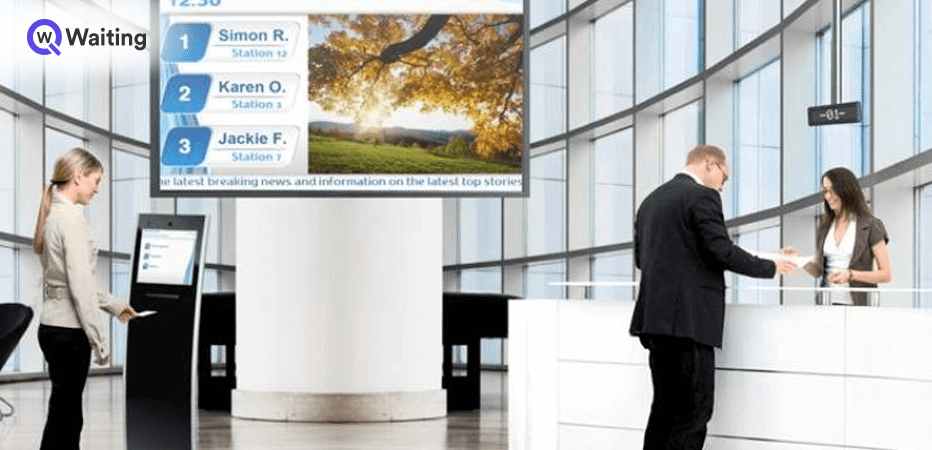
Managing crowded queues is crucial for event organizers, busy institutions, and those aiming to enhance customer satisfaction. This guide will provide you with various insights and strategies to ensure smoother operations and minimize frustration among customers. The golden strategy is to deploy a queue line system to streamline the entire queuing process, which significantly benefits the business & customers. By implementing these techniques, you will have the necessary tools to handle busy queues and maintain order and efficiency in any setting.
In this blog, I’ll discuss queues, their types, the challenges met by businesses, and how to overcome them. Let’s dive deeper to gain valuable insights.
What is Queue Line?

A queue line is a designated area where individuals wait in an organized queue to buy tickets for a specific service, event, & activity. It is commonly seen in various premises like retail stores, cinema halls, banks, amusement parks, hospitals, airports, government offices, and more. However, in these places, it is necessary to manage the movement of people and ensure fairness and order in serving customers. The queue line typically includes barriers or ropes that guide individuals to be in line. Instructions or indicators such as signage or floor markings are often used to guide customers where to wait.
Diverse Forms Of Queues
This article will outline five types of queues and offer an elaborate explanation for each one. We’ll dive into each type using illustrative examples to facilitate better understanding.
Linear Queue
A linear queue is the most basic form of queue where people wait in a single row. Basically, it follows the “first-come, first-served” base. This type of queue is commonly found in many places, like movie theaters, where people line up to purchase tickets & enter the theater. Also, it is observed in fast-food restaurants, where customers wait in a single line to place their orders.
Non-linear Queue
A non-linear queue is a queue where people do not wait in a straight line but rather in a more scattered manner. It can be seen in situations where individuals form multiple lines that meet at a central point. For instance, at any concert or event, people may gather in groups near different entrance gates. Then, they merge into a single line as they approach the ticket check.
Multiple Line Queues
Multiple line queues also known as parallel queues formed by having several individual queue lines running side by side. Each queue operates independently, serving customers on the order they arrive. This type of queue line is commonly seen in supermarkets, banks, or post offices, where multiple counters are serving customer needs. Customers choose which line to join based on their preference or the perceived length of the queue.
Priority Queue
A priority queue assigns different priorities to customers based on certain criteria. Individuals are served based on their priority rather than strictly following the order of arrival. This type of queue is often used in hospitals, such as emergency rooms. Patients with critical conditions are given higher priority for immediate treatment, regardless of their arrival time.
Virtual Queue

A virtual queue eliminates the physical waiting line by using technology to manage the queueing process. Customers can join the queue remotely through a mobile app or a kiosk, and receive updates about their estimated waiting time. An example of a virtual queue is the Fastpass system used in Disney theme parks. Visitors can reserve specific time slots for popular attractions without standing in long lines.
Challenges Faced While Managing Crowded Queue Lines
Managing crowded queue lines can indeed be a challenging task. Some common challenges include:
Space Constraints
A lack of sufficient space can pose challenges when it comes to accommodating & effectively managing a large number of people in a structured line. Ultimately, it leads to confusion and possible safety risks.
Queue Discipline
Maintaining discipline and order in a crowded queue can be a significant challenge. People may try to bypass the line, push others, or engage in unruly behavior, which hindered progress and resulting a poor customer experience.
Communication
Communicating important information to the crowd can be a difficult task in a noisy environment. As a result, announcements or instructions may not effectively reach every individual, which leads to confusion and misunderstandings.
Waiting Time Perception
Long waiting times for accessing services can cause customers to feel frustrated and impatient while in a queue, ultimately leading to dissatisfaction. Therefore, it is crucial to effectively manage the perception of waiting time to prevent dissatisfaction and maintain a positive customer experience.
Security And Safety Concerns
Large crowds can create security and safety risks. It is vital to effectively manage the queue, which reduces the chances of accidents, crowd surges, or unauthorized access. Eventually, it ensures the security and safety of all individuals involved.
Queue Overflow Management
When a queue becomes too long and extends beyond its intended boundaries. It can disrupt the smooth progress of other activities or cause blockages in the surrounding space. Managing overflow situations requires swift action to redirect the crowd or provide additional queue infrastructure.
How To Manage Queues Efficiently And Seamlessly?
Managing queues efficiently and seamlessly requires a combination of strategies and technologies. Here are some key steps to achieving this:
Reduced Waiting Times

Minimizing waiting times is essential to keep customers happy and satisfied. This can be achieved by optimizing staffing levels, streamlining processes, and implementing an advanced online queue system on the premises.
Faster Service Times
Efficiently managing long queues involves ensuring that service times are as fast as possible. This can be achieved by ensuring that you have enough staff members available to handle the expected number of customers. Regularly analyze and adjust your staffing levels based on historical data and peak times to avoid long queues. Additionally, train your staff to work efficiently and minimize service times. Provide them with effective customer service techniques on how to handle common issues quickly and encourage proactive problem-solving.
Proactive Communications

It is crucial to keep customers informed about their queue status and estimated waiting times to manage their expectations and reduce stress. You can implement proactive communication channels, such as digital signage, SMS notifications, & queue status updates through mobile apps, to provide real-time updates to customers.
Deploy A Queue Management System

Queue management software is an all-in-one solution that optimizes the entire queue management process. It includes features such as ticketing systems, real-time analytics, virtual queuing, staff management, and more. The system enables efficient monitoring and management of crowded queues, effective resource allocation, and provides insights into customer behavior to make data-driven decisions.
Why Qwaiting Is The Best?
Qwaiting is a smart queueing system that helps businesses efficiently manage customer queues and reduce wait times. It helps prevent chaos and confusion, especially during busy periods when there is a high volume of customers in your business. The system offers three plans: basic, premium, and enterprise, which can be purchased according to the specific needs of the business. This software is suitable for all types of businesses and industries. Additionally, businesses have the option to upgrade their plan and access additional features.
Qwaiting software offers some features that may include:
- Customers receive a digital token that represents their waiting time and place in the queue.
- The software tracks the status and progress of each customer in the queue, allowing businesses to monitor and manage wait times.
- Customers can receive updates through SMS, mobile apps, or display screens, informing them of their queue status and estimated wait times.
- It allows customers to book appointments in advance, helping to further streamline the queueing process.
- The software may provide different insights and real-time reports.
- Customers can provide feedback to the staff members after availing the services.
- The system is highly customizable and flexible.
Final Words
To sum up, a queue is a line or sequence of people waiting for their turn to receive a service. For example- in a grocery store, cinema ticket counter, etc. However, sometimes it becomes difficult to manage queues efficiently. This is where queue management software comes into play. By researching and evaluating Qwaiting’s offerings, you can determine if they meet your specific needs and objectives. Qwaiting aims to enhance customer experience and operational efficiency for businesses by effectively managing queues and reducing wait times.
